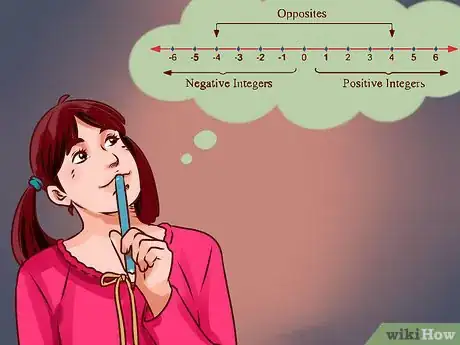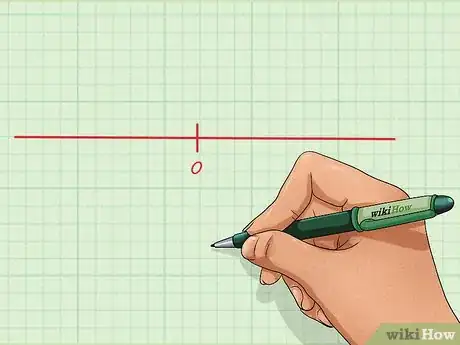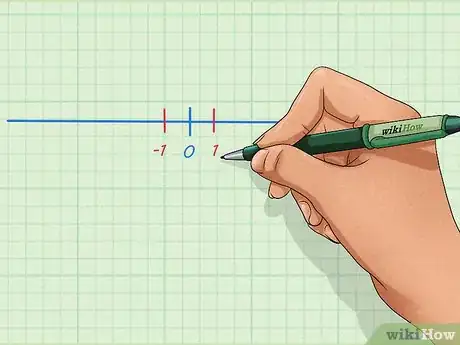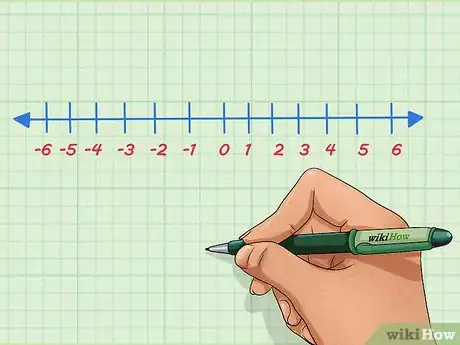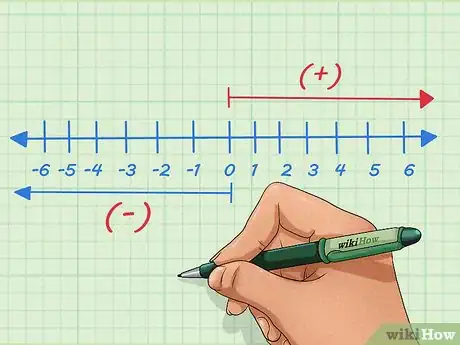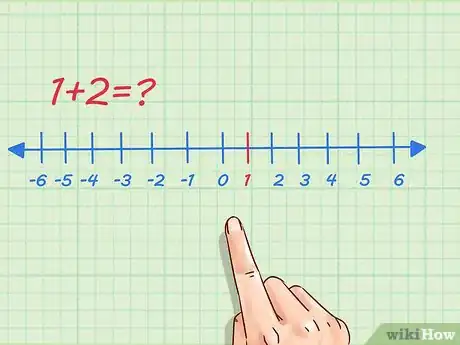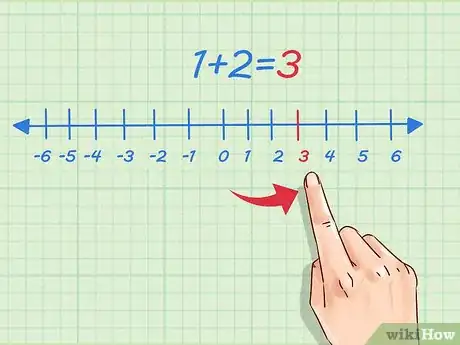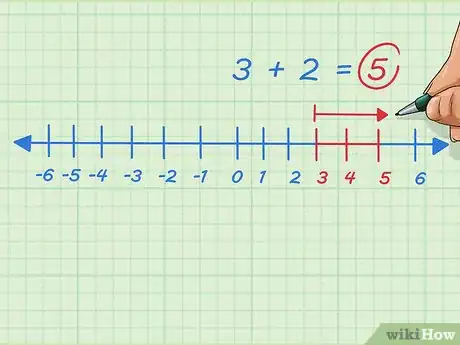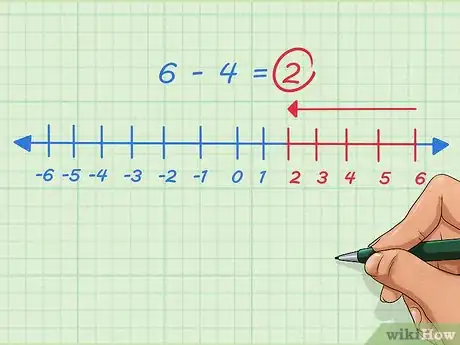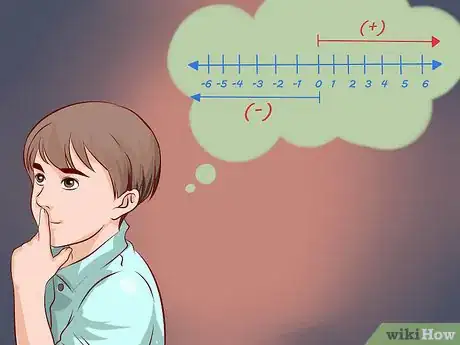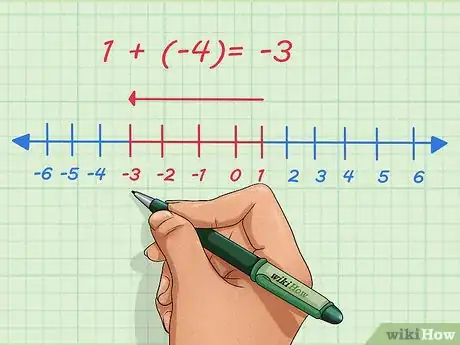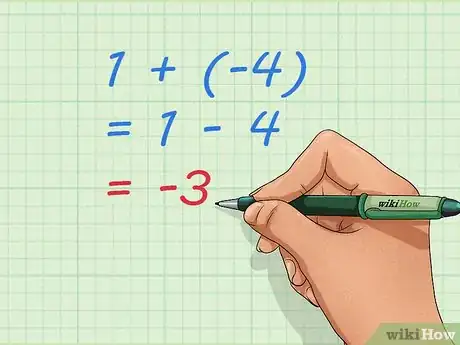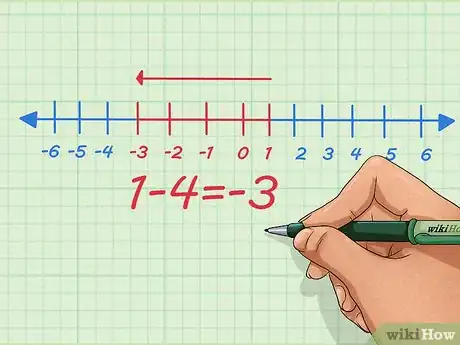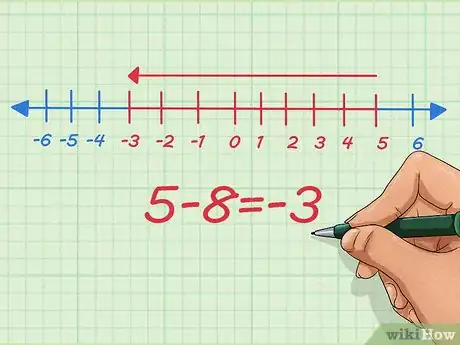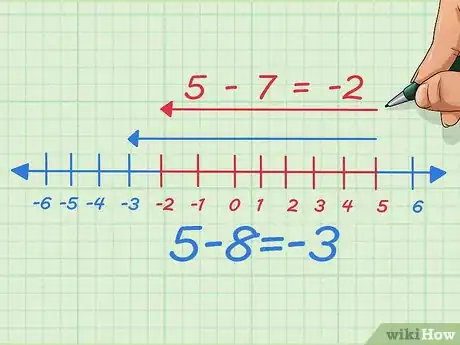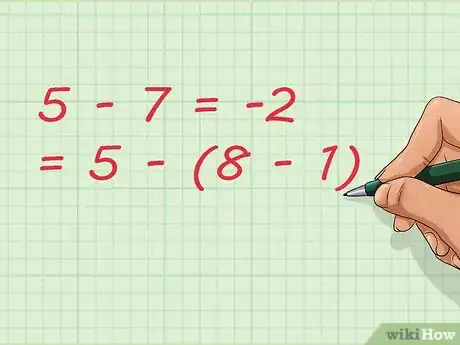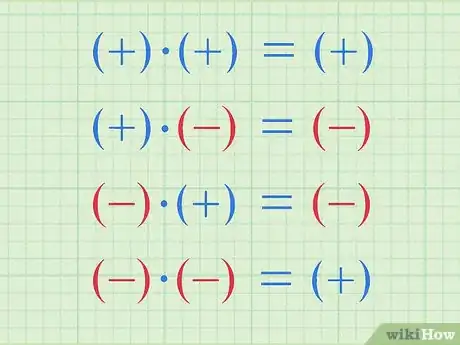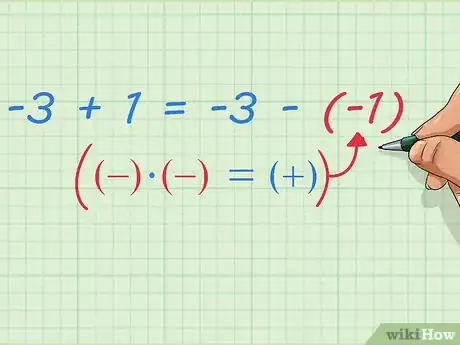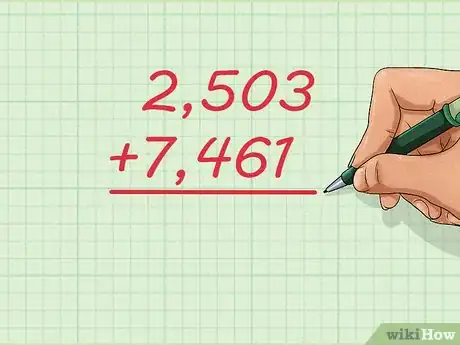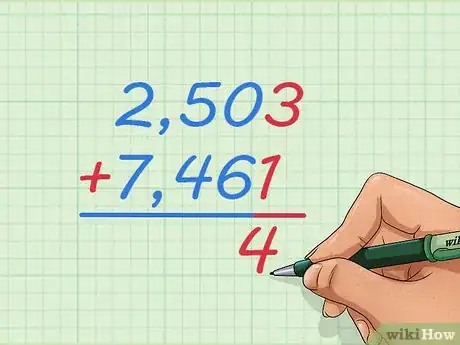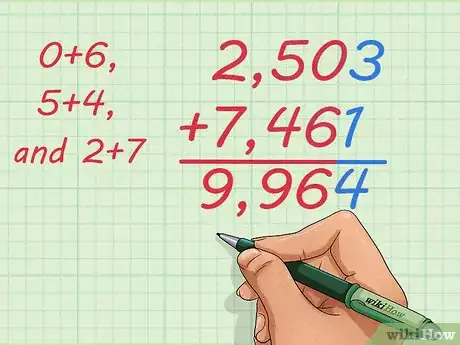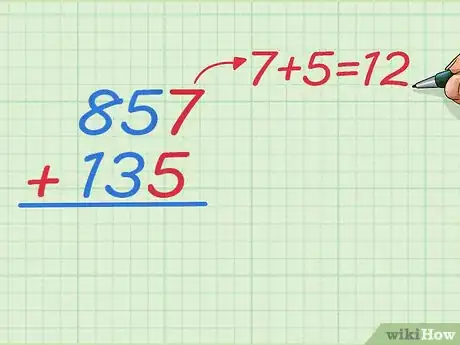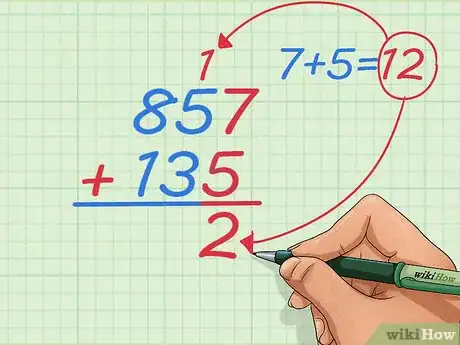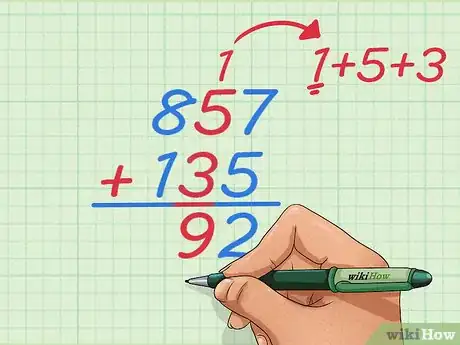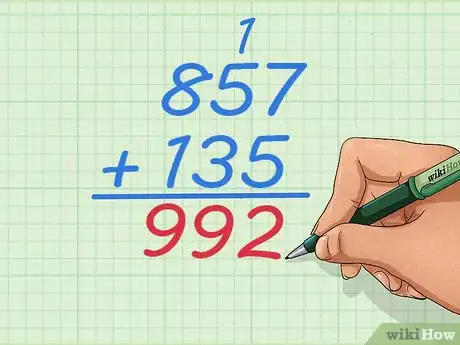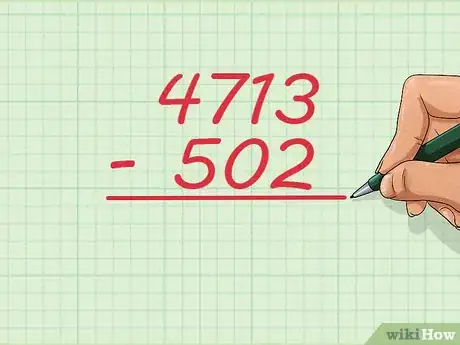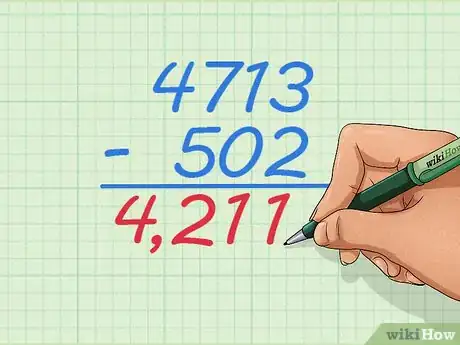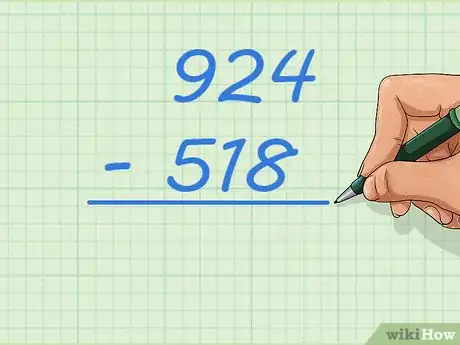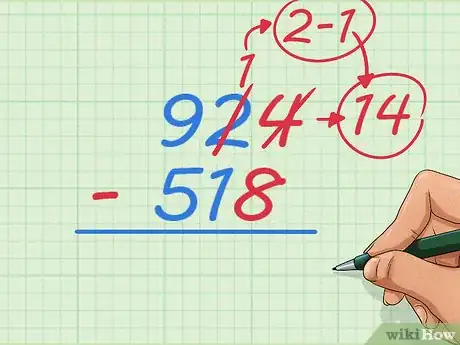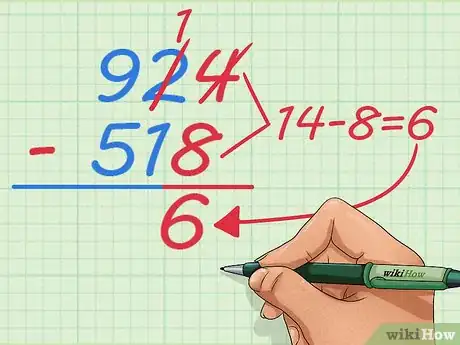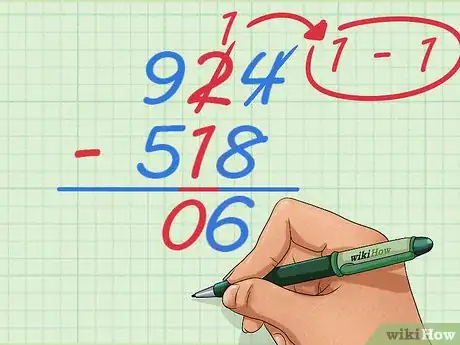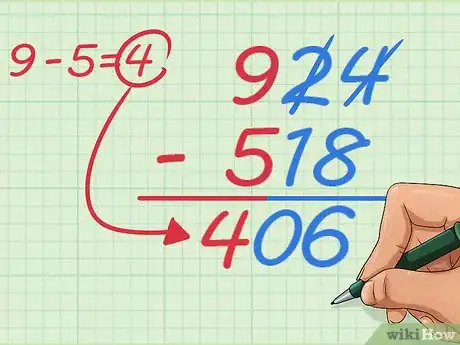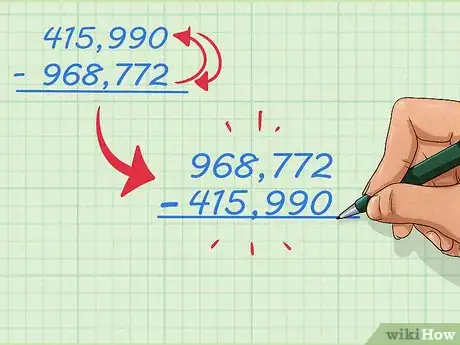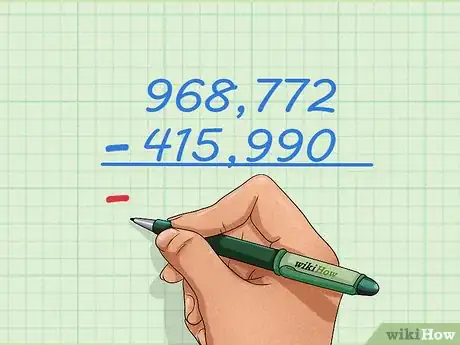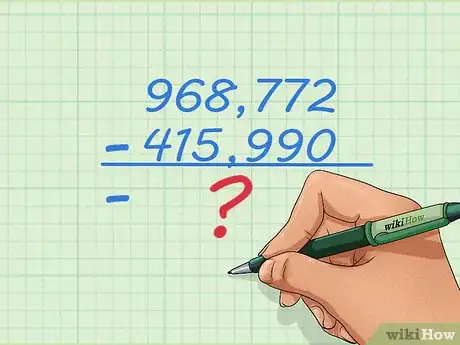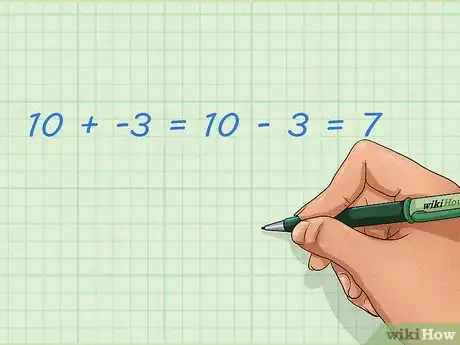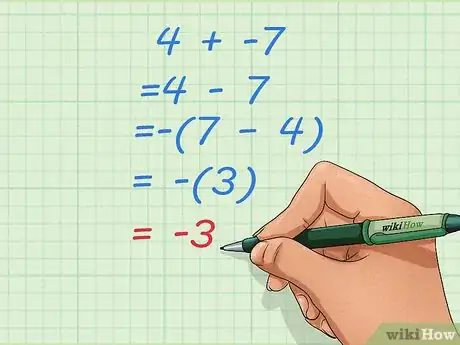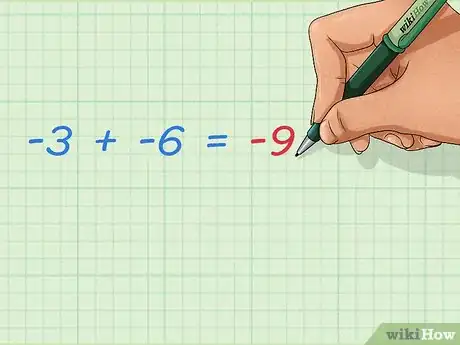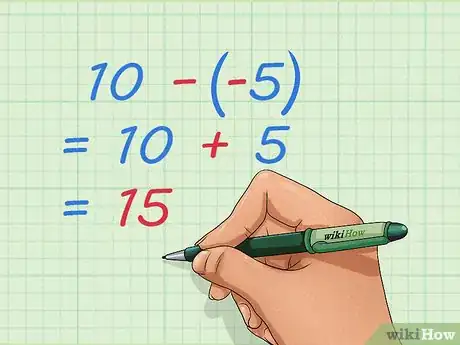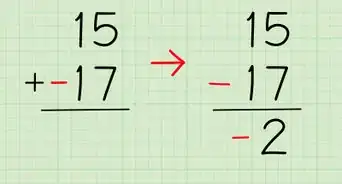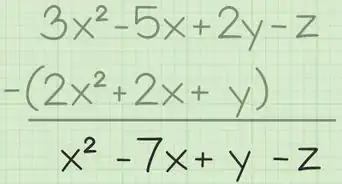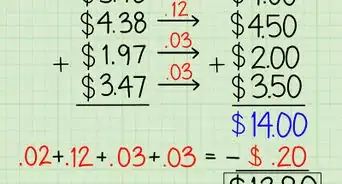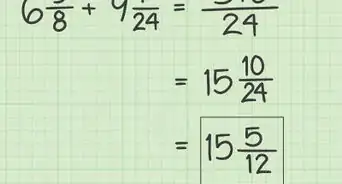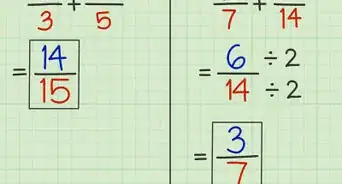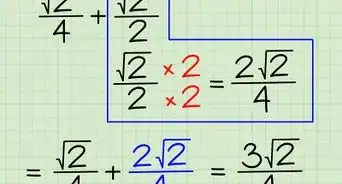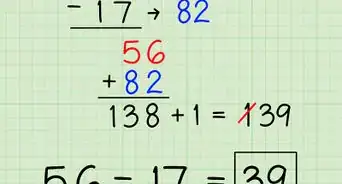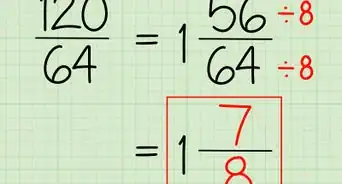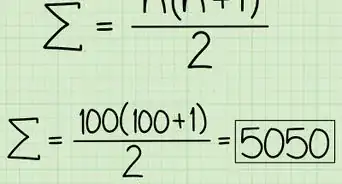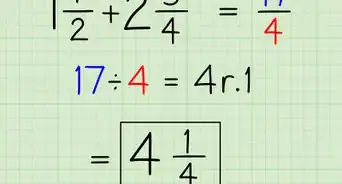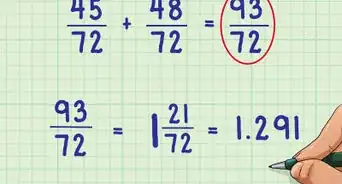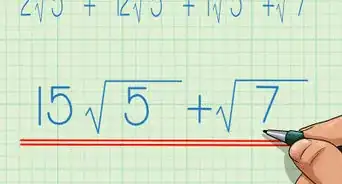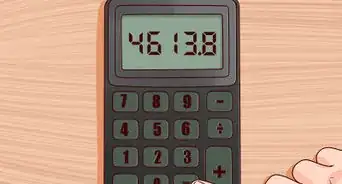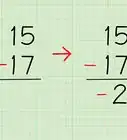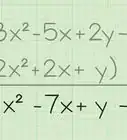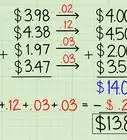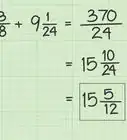This article was co-authored by Jake Adams. Jake Adams is an academic tutor and the owner of Simplifi EDU, a Santa Monica, California based online tutoring business offering learning resources and online tutors for academic subjects K-College, SAT & ACT prep, and college admissions applications. With over 14 years of professional tutoring experience, Jake is dedicated to providing his clients the very best online tutoring experience and access to a network of excellent undergraduate and graduate-level tutors from top colleges all over the nation. Jake holds a BS in International Business and Marketing from Pepperdine University.
There are 9 references cited in this article, which can be found at the bottom of the page.
This article has been viewed 169,196 times.
You might think of integers as just ordinary numbers, like 3, -12, 17, 0, 7000, or -582 but many people do confuse them as whole numbers. Integers are a lot like whole numbers but they also contain their additive inverse and zero. (Note that zero is its own additive inverse.)[1] Hence we conclude that whole numbers are a branch or subset of Integers but no fractions and decimals allowed! Read this article to learn everything you need to know about adding and subtracting integers, or skip to the section you need help with.
Steps
Adding and Subtracting Positive Integers with a Number Line
-
1Understand what a number line is. Number lines turn basic math into something real and physical that you can see in front of you. By just using a few marks and some common sense, we can use them like calculators to add and subtract numbers.[2]
-
2Draw a basic number line. Imagine or draw a straight, flat line. Make a mark near the middle of your line. Write a 0 or zero next to this mark.
- Your math book might call this point the origin, since it's where numbers originate, or start from.
Advertisement -
3Draw two marks, one on each side of your zero. Write -1 next to the mark on the left and 1 next to the mark on the right. These are the integers closest to zero.
- Don't worry about making the spacing perfect - as long as you're close enough that you can tell what it's supposed to mean, the number line will work.
- The left side is the side at the beginning of a sentence.
-
4Complete your number line by adding more numbers. Make more marks to the left of -1 and to the right of 1. Moving left from -1, label the next marks -2, -3, and -4. Moving right from 1, label the next marks 2, 3, and 4. You can keep going if you have space on your paper.
- The example image shows a number line from -6 to 6.
-
5Understand positive and negative integers. A positive integer, also called a natural number,[3] is an integer larger than zero. 1, 2, 3, 25, 99, and 2007 are all positive integers. A negative integer is an integer less than zero (like -2, -4 and -88).
- An integer is just another way of saying a "whole number". Fractions like 1/2 (one half) are only part of a number, so they are not integers. Same with a decimal like 0.25 (zero point two five); decimals are not integers.
-
6Start solving 1+2 by putting your finger on the mark labeled 1. We're going to solve the simple addition problem 1+2 using the number line you just made. The first number in this problem is 1, so start by putting your finger on that number.
- Do you think this is too easy? If you've done any addition at all, you probably know the answer to 1+2. That's good: if you know the answer it will be easier to understand how number lines work. Then you can use a number line for more difficult addition problems, or to prepare you for more difficult math like algebra.
-
7Add 1+2 by moving your finger 2 marks to the right. Slide your finger to the right, counting the number of marks (other numbers) you pass by. Once you've hit 2 new marks, stop. The number your finger is pointing to, 3, is the answer.
-
8Add any positive integers by moving right on a number line. Suppose we're figuring out what 3 + 2 is. Start at 3, move to the right or increase by 2. We end up at 5. This is written as 3 + 2 = 5.
-
9Subtract positive integers by moving left on a number line. For example, if we have 6 - 4, we start at 6, move left four spaces, and end up at 2. This is written as 6 - 4 = 2.
Adding and Subtracting Negative Numbers with a Number Line
-
1Learn what a number line is. If you don't know how to make a number line, go back to Adding and Subtracting Positive Numbers with a Number Line to learn how.
-
2Understand negative numbers.[4] Positive numbers are increases, or movements right on the number line. Negative numbers are decreases, or movements left on the number line. Adding a negative number moves the pointer left on the number line.
- For example, let's add 1 and -4. In the standard, familiar number writing you're used to, this is just:
1 + (-4)
On a number line, we start at 1, move 4 spaces left, and end up at -3.
- For example, let's add 1 and -4. In the standard, familiar number writing you're used to, this is just:
-
3Use a basic equation to understand adding a negative number. Notice that -3, our answer, is the same thing we'd get if we just did 1 - 4. Adding 1 + (-4) and subtracting 4 from 1 are the same. We can write this as an equation, a kind of mathematical sentence showing one things equals another:
1 + (-4) = 1 - 4 = -3 -
4Instead of adding a negative number, turn it into a subtraction problem using only positive numbers. As we can see from our simple equation above, we can go both ways — changing "add a negative number" to "subtract a positive number" and vice versa. You might have just been taught "change a minus-plus to a minus" without really knowing why — this is why.
- For example, consider -4. When we add -4 to 1, it decreases 1 by 4. We can "say this in math" by writing
1 + (-4) = 1 - 4
We'd write this on a number line, as starting with our pointer at 1, then adding a move 4 spaces to the left (in other words, adding a -4). Since it's an equation, one thing equals another - so the reverse works too:1 - 4 = 1 + (-4)
- For example, consider -4. When we add -4 to 1, it decreases 1 by 4. We can "say this in math" by writing
-
5Understand how subtraction and negative numbers work on a number line. On a number line, subtracting a negative is a decrease in the length of a decrease.[5] Let's start with 5 - 8.
- On a number line, we start with our pointer at 5, decrease by 8, and arrive with our pointer at -3.
-
6Decrease the amount you're subtracting and see what happens. Suppose we decrease the amount we're decreasing by one less, or in other words subtract 7 instead of 8. Now we move one less space to the left on the number line. In written terms, we started with
5 - 8 = -3
Now we'll only be moving 7 left, so we have5 - 7 = -2 -
7Notice how decreasing a decrease can result in an increase. For our example, we decrease the amount we go left by 1. In equation terms, we could write our shorter move as:
5 - 7 = -2 = 5 - (8 - 1) -
8Change minus signs to plus signs when adding negative numbers. Using our step of "change all subtraction to addition", we could write our shorter move now as:
5 - (8 - 1) = 5 - 7 = 5 - 8 + 1 .- We already know that 5 - 8 = -3, so let's take 5 - 8 out of our equation now and put in -3:
5 - (8 - 1) = 5 - 7 = -3 + 1 - We already know what 5 - (8 - 1) is — it's going one space less than 5 - 8. Our equation can show the fact that 5 - 8 gives us -3, and going one space short gives us -2. Our equation can be written like this now:
-3 - (-1) = -3 + 1
- We already know that 5 - 8 = -3, so let's take 5 - 8 out of our equation now and put in -3:
-
9Write subtraction of negative numbers as addition. Notice what's happened at the end of this - we've proved that:
-3 + 1 = -3 - (-1)
We can express this as a simple, more general rule for writing math:first number plus a second number = first number minus (negative second number)
Or, in more simple terms like you've probably heard in a math class:Change two minuses to a plus .
Adding Large Positive Integers
-
1Write the addition problem 2,503 + 7,461 with one number over the other. Line up the numbers so the 2 is above the 7, the 5 is above the 4, and so on. In this method, we'll learn how to add integers that are too large to do in your head or on a number line.
- Write a + to the left of the bottom number, and a line underneath it, just as you probably learned to do for smaller addition problems.
-
2Start by adding the two numbers furthest to the right. It might seem a little odd to start from the right, since when reading numbers we start from the left. We have to add in this order to get the right answer, though, as you'll see later on.[6]
- Underneath the two numbers to the right, 3 and 1, write what you get when you add them together: 4.
-
3Add each other number the same way. Moving left, you'll add 0+6, 5+4, and 2+7. Write the answers below each pair of numbers.
- You should end up with the answer to the problem: 9,964. Check your work if you made a mistake.
-
4Now begin adding 857+135. You should notice something different as soon as add the first pair of numbers on the right. 7+5 equals 12, a two digit number, but you can only write one digit beneath that column. Keep reading to find out what to do, and why you always need to start on the right instead of the left.
-
5Add 7+5 and learn where to put the answer. 7+5=12, but you shouldn't put both the 1 and the 2 underneath the bottom line. Instead, put the last digit, 2, underneath the line and put the first digit, 1, above the column to the left, 5+3.
- If you're curious about how this works, think about what dividing the 1 and 2 means. You've actually split 12 into 10 and 2. You can write the full 10 above the numbers if you want, and you'll see that the 1 lines up with the 5 and 3, just like before.
-
6Add 1+5+3 to get the next digit of the answer. You now have three digits to add for this number, since you added a 1 to this column. The answer is 9, so your answer so far should be 92.
-
7Finish the problem as normal. Keep moving left until you've added all the numbers, in this case just one more column. Your final answer should be 992.
- You can try more complicated problems, like 974+568. Remember, each time you get a two digit number, only write the last digit as the answer, and put the other digit above the column to the left, the one you'll add together next. If the last column ends up with a two digit number, you can just write it as your answer.
- See the Tips section for an answer to the problem 974+568 after you try to solve it.
Subtracting Large Positive Integers
-
1Write the subtraction problem 4713 - 502 with the first number above the other. Write them so the 3 is directly above the 2, the 1 is above the 0, the 7 is above the 5, and the 4 is above a blank space.
- You can write a 0 underneath the 4 if it helps you keep track of which number is above which other number. You can always add zeros in front of a number without changing it. Make sure to add it in front of the number and not after it.
-
2Subtract each bottom number from the number directly above it, starting from the right. Always start from the right.[7] Solve for 3-2, 1-0, 7-5, and 4-0, putting the answer to each problem directly underneath the two numbers in that subtraction problem.
- You should end up with the answer, 4,211.
-
3Now write down the problem 924 - 518 in the same way. These numbers are the same length, so you can line them up easily. This problem will teach you something new about subtracting integers, if you didn't know it already.
-
4Learn how to solve the first problem, on the far right. This is 4 - 8. This is tricky, since 4 is smaller than 8, but don't use negative numbers. Instead, follow these steps:
- On the top line, cross out the 2 and write 1 instead. The 2 should be directly to the left of the 4.
- Cross out the 4 and write 14. Do this in a small space so it's clear the 14 is entirely above the 8. You can also just write a 1 in front of the 4 to make it 14 if you have the room.
- What you just did is "borrow" a 1 from the tens place, or second column from the right, and turn it into 10 in the ones place, or furthest column to the right. one 10 is the same as ten 1s, so this is still the same problem.
-
5Now solve the problem 14 - 8 and write the answer under the right column. You should now have a 6 on the far right of the line where your answer will be.
-
6Solve the next column to the left using the new number you wrote down. This should now be 1 - 1, which equals 0.
- Your answer so far should be 06.
-
7Finish the problem by solving the last, left column. 9 - 5=4, so your final answer is 406.
-
8Now begin a problem where you subtract a larger number from a smaller number. Say you're asked to solve 415,990 - 968,772. You write the second number underneath the first, and then realize the number at the bottom is larger! You can tell this immediately by the first digits on the left: 9 is smaller than 4, so the number beginning with 9 has to be larger.
- Make sure to line the numbers up correctly before comparing them. 912 is not bigger than 5000, which you can tell if you've lined them up correctly, since the 5 is above nothing at all. You can add leading zeros if it helps, for instance writing 912 as 0912 so it lines up well with 5000.
-
9Write the smaller number underneath the larger and add a - sign in front of the answer. Whenever you subtract a number from a smaller number, you'll get a negative number as your answer. It's best to write this sign before solving, so you don't forget to include it.
-
10To find the answer, subtract the small number from the larger one and remember to include the - sign. Your answer will be negative, as you showed by writing a - sign. Do not try to subtract the larger number from the smaller and just make it negative; you will not get the wrong answer.
- The new problem to solve is: 968,772 - 415,990 = - ? Look at the Tips for the answer after trying to solve it.
Adding and Subtracting Negative Integers
-
1Learn how to add a negative and a positive number. Adding a negative integer is the same as subtracting a positive one.[8] This is easier to see by testing this out with the number line method described in another section, but you can think about it in words too. A negative number is not a normal quantity; it is less than zero, and can represent an amount being taken away. If you add this "taking away" to a normal number, you'll end up making it smaller.
- Example: 10 + -3 = 10 - 3 = 7
- Example: -12 + 18 = 18 + -12 = 18 – 12 = 6. Remember that you can always switch the order of numbers in an addition problem, but not in a subtraction problem.
-
2Learn what to do if this turns into a subtraction problem with a smaller number first. Sometimes turning your addition problem into a subtraction problem as described above can end up with odd results like 4 – 7. When this happens, reverse the order of the numbers and make your answer negative.
- Say you begin with 4 + -7.
- Turn this into a subtraction problem: 4 - 7
- Reverse the order and make it negative: -(7 – 4) = -(3) = -3.
- If you aren't used to parentheses in your equations yet, think of it like this: 4 - 7 turns into 7 - 4 with a minus sign added. 7 - 4 = 3 but I should make it -3 for the right answer to the problem 4 - 7.
-
3Learn how to add two negative integers. Two negative numbers added together will always make a number more negative. There is nothing positive being added, so you'll always end up with something further from 0.[9] Finding the answer is simple:
- -3 + -6 = -9
- -15 + -5 = -20
- Do you see the pattern? All you need to do is add the numbers as though they were positive and add a negative sign. -4 + -3 = -(4 + 3) = -7
-
4Learn how to subtract a negative integer. Just like the addition problems, you can rewrite these so you only have to deal with positive numbers. If you're subtracting a negative number, you're "taking away" some "stuff taken away", which is the same as adding a positive number.
- Think of the negative number as stolen money. If you "subtract", or take away, some stolen money so you can return it, that's the same as giving that person money, right?
- Example: 10 – -5 = 10 + 5 = 15
- Example: -1 – -2 = -1 + 2. You already learned how to solve this problem in an early step, remember? Reread Learn how to add a negative and a positive number if you don't remember.
- Here's the full solution to the last example: -1 – -2 = -1 + 2 = 2 + -1 = 2 – 1 = 1.
Community Q&A
-
QuestionWhat do I do when I divide -267 by 54?
 DonaganTop AnswererDivide 267 by 54, then put a negative sign in front of the quotient.
DonaganTop AnswererDivide 267 by 54, then put a negative sign in front of the quotient. -
QuestionFor subtraction, we add the additive inverse of the integers that is being subtracted from the other integer; can you explain this?
 DonaganTop AnswererThe "additive inverse" of a number is just the negative version of the number. For example, -6 is the additive inverse of 6. In algebraic terms, adding a negative number is the same as subtracting the positive version of that negative number. Thus, subtracting 4 from 9 is the same as adding a -4 to 9. Either way you wind up with 5.
DonaganTop AnswererThe "additive inverse" of a number is just the negative version of the number. For example, -6 is the additive inverse of 6. In algebraic terms, adding a negative number is the same as subtracting the positive version of that negative number. Thus, subtracting 4 from 9 is the same as adding a -4 to 9. Either way you wind up with 5. -
QuestionHow do I solve -1 - -6?
 DonaganTop AnswererChange the sign of the second number, then add it to the first number: (-1) + (+6) = +5.
DonaganTop AnswererChange the sign of the second number, then add it to the first number: (-1) + (+6) = +5.
Expert Interview

Thanks for reading our article! If you'd like to learn more about learning mathematics, check out our in-depth interview with Jake Adams.
References
- ↑ https://www.mathopenref.com/integer.html
- ↑ https://www.splashmath.com/math-vocabulary/number-sense/number-line
- ↑ https://www.mathsisfun.com/definitions/natural-number.html
- ↑ https://www.khanacademy.org/math/arithmetic/arith-review-negative-numbers/arith-review-neg-num-intro/v/negative-numbers-introduction
- ↑ https://www.varsitytutors.com/hotmath/hotmath_help/topics/adding-and-subtracting-negatives
- ↑ https://www.khanacademy.org/math/arithmetic-home/negative-numbers/add-sub-neg-number-line/v/integer-equations-to-describe-diagram
- ↑ https://edu.gcfglobal.org/en/additionsubtraction/subtracting-two-and-threedigit-numbers/1/
- ↑ https://www.mathsisfun.com/positive-negative-integers.html
- ↑ https://www.wyzant.com/resources/lessons/math/elementary_math/positive_and_negative_numbers/adding_positive_and_negative_numbers
About This Article
To add and subtract integers, start by checking to see if they're positive or negative. If they're both positive or both negative, add and subtract them like you would with any other number. If you're adding a positive number to a negative number, subtract the numbers instead of adding them. If you're subtracting positive and negative numbers, subtract the smallest number from the largest number and use the sign of the largest number for your answer. If you want to learn how to use a number line to add or subtract your integers, keep reading the article!
